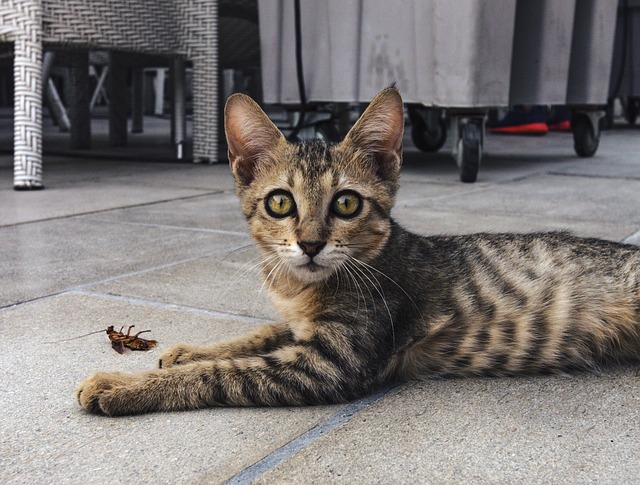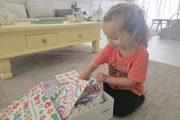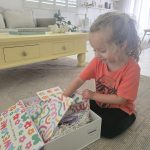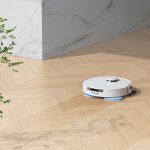9 Things in Your Home That Could Be Triggering Your Child’s Asthma or Allergies

9 Things in Your Home That Could Be Triggering Your Child’s Asthma or Allergies
Sponsored post
We are very lucky to live in Australia and often take our air quality for granted. Australia has very clean air by world standards but there are ongoing challenges to ensure we improve and maintain our air quality.
According to the Environment Protection Society, over 10% of Australians have asthma – that’s a whopping 2.5 million! Asthma affects all age groups, but most often starts in childhood. Given how much time we spend in our home, it is especially important for parents of asthma sufferers to reduce triggers and contaminants that may be floating indoors that can cause flare-ups. Using an air purifier in your child’s bedroom can be an effective way to reduce symptoms and you can also get air purifiers for larger open-plan rooms that your family spends a significant amount of time in.
Air purifiers work on keeping your homes air cleaner, removing polluting particles like dust and pollen, and gaseous pollutants like pesticides and paints. If you live in an area prone to humidity, a dehumidifier can also be an effective way to control invisible mould and mildew affecting air quality. Humidifiers and dehumidifiers deal with problems like mold growth by mediating the moisture in your home.
To help you to keep your home as free from contaminants as possible, we’ve put together this list of common asthma or allergy triggers and common places in your home you might find them.
Bedrooms
We know, it’s not a very pleasant thought, but dust mites are impossible to avoid and are prevalent in our homes, feeding off dead skin cells in dust. The dust mites’ are often found in pillows, bedsheets, mattresses, carpets etc and can become easily airborne when we vacuum, dust or make a bed.
Children generally spend a large amount of time in their bedrooms, other sleeping or playing, and so the air quality in this room can be of particular importance.
Stuffed Animals
They may look cute, but your child’s collection of stuffed toys may very well be a breeding ground for dust mites. When you consider that we often allow our children to keep them on the bed with them or hold them close to their face when they sleep, it is obvious why this could be problematic. Parents are advised to run stuffed toys through a hot wash cycle once a week in the washing machine to kill the dust mites. Another technique that is effective is to place them inside a bag in the freezer for 3-5 hours.
Books and ornaments
Bookshelves are notorious for collecting dust and the act of cleaning away that dust sends particles into the air for around 10-15 minutes after your finished cleaning. To limit the amount of airborne contaminants in your home, consider decluttering as much as possible and switching on an air purifier to filter the air.
Clothing
Believe it or not, even your favourite outfit has the potential to be an asthma trigger culprit.
If you dry your family’s clothes on a washing line outdoors it is important to take note of pollen levels in your area. Pollen that attaches to your clothing during a day when the pollen count is high, is then taken into your home (unbeknownst to you) and worn close to the body and face, or hung away in the wardrobe with your other clothing.
Christmas Decorations
It’s pretty safe to say that for the majority of the year most of us store our Christmas decorations out of the way somewhere, where they generally collect dust until the festive season rolls back around. Be sure to dust off your decorations (outside) before hanging them around your home and your Christmas tree. When packing them away try to use sealed containers that will limit the amount of dust on them when you retrieve them next year.
Animals
Unfortunately, the family pet can be a significant asthma trigger.
Particularly problematic is dander (skin flakes kind of like dandruff), saliva, urine and feathers.
If your pet is causing your child’s asthma to flare up, it is advisable to keep them outside, or keep them out of bedrooms at the very least.
Cockroaches
We know, we should have warned you it was coming!
Believe it or not cockroaches, like dust mites, can also be a major asthma or allergy trigger. Their decomposing debris and faecal matter is the culprit, and can be easily airborne around the home. To avoid encouraging the presence of cockroaches in your home avoid saving boxes, newspaper and paper bags which they tend to find particularly inviting. It is also best to avoid leaving opened food packets and containers around, or leaving unwashed plates and cutlery around the kitchen. Likewise, try to avoid leaving crumbs on the floor and kitchen counters
Cleaning and Personal Care Products
It’s ironic, but often times the products that we purchase and use around the home in an effort to keep asthma or allergy symptoms at bay, can actually contain chemicals that have been linked to asthma flare-ups. Products like cat litter, surface cleaners, air fresheners, scented candles, hair sprays and insect sprays etc may contain chemicals which are best avoided by asthmatic people.
Leaky Sinks and Humid Bathrooms
Basically any area that is prone to getting and staying wet has the potential to become a mould hotspot. Mould, is a type of living thing that grows well in damp places like bathrooms that are not well ventilated, and actively creates ore mould by sending spores out into the air which can then settle and grow, and repeat the process. It is these airborne spores which can trigger asthma in both children and adults. You can minimise the risk of mould by following a few rules: clean or replace mouldy shower curtains, check under your sinks for any leaks and ensure they are fixed or replaced, use an extraction fan when possible, and run an air purifier or dehumidifier.
Whilst it is impossible for you to avoid everything that may cause your child to experience asthma symptoms, it is certainly possible to minimise their exposure to some of the most common culprits such as mould, dust mites and pollen by being mindful of the areas of your home that may be triggering an asthmatic episode.
Disclaimer: The information provided on this site is intended for your general knowledge only and is not a substitute for professional medical advice or treatment for specific medical conditions. You should not use this information to diagnose or treat a health problem or disease without consulting with a qualified healthcare provider. Please consult your healthcare provider with any questions or concerns you may have regarding your condition.















